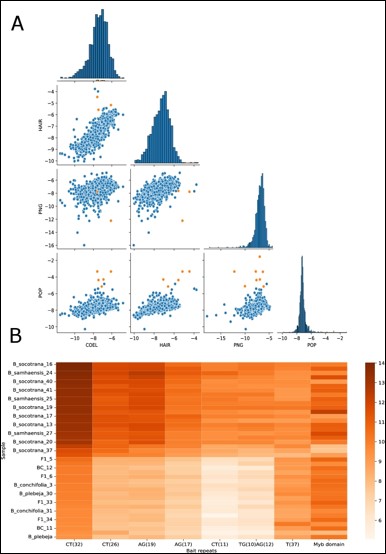A HYBRID CAPTURE BAIT SET FOR BEGONIA
DOI:
https://doi.org/10.24823/ejb.2022.409Keywords:
Begoniaceae, Enrichment panel, Probe set, Target capture sequencingAbstract
Hybrid capture with baits has proven to be a rich source of genetic data for many genera. The depth of information provided allows resolution of rapid radiations and of deep phylogenetic patterns. Retrieved data can also be used for population genetic studies and analysis of functional genetic diversity. To gain a better understanding of the evolutionary patterns across this large, diverse and fascinating genus through phylogenetics, population genetics and sequence analysis, we have designed and tested a set of 1239 baits covering low copy number and functionally annotated genes involved in shade adaptation and development and genetically linked to key traits. We demonstrate successful recovery of sequence data from species across Begonia and from fresh, silica-dried and older herbarium material.

Downloads
Additional Files
Published
Issue
Section
License
Copyright (c) 2022 T. Michel, Y.-H. Tseng, H.P. Wilson, K.-F. Chung, C.A. Kidner

This work is licensed under a Creative Commons Attribution 4.0 International License.
Please read our Open Access, Copyright and Permissions policies for more information.


